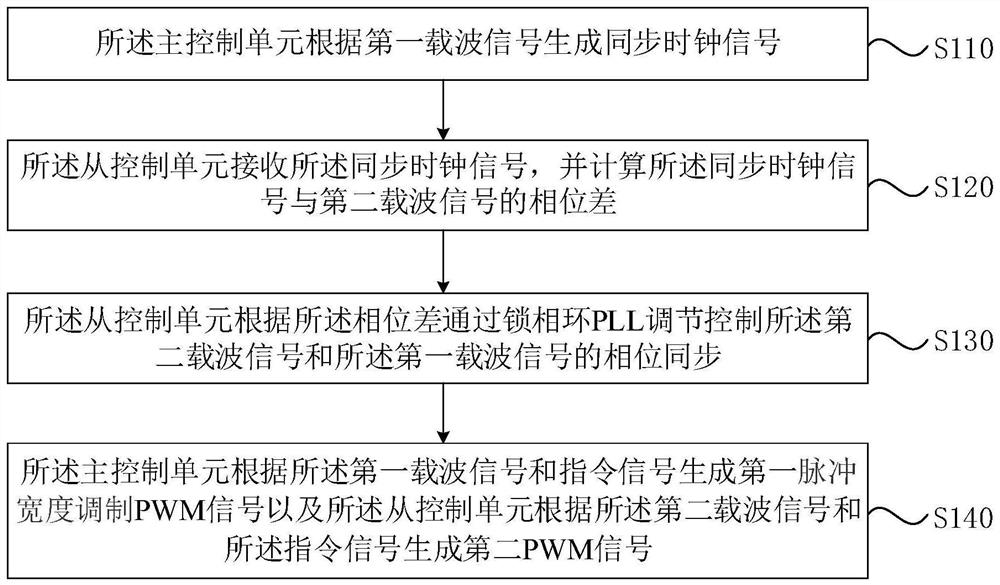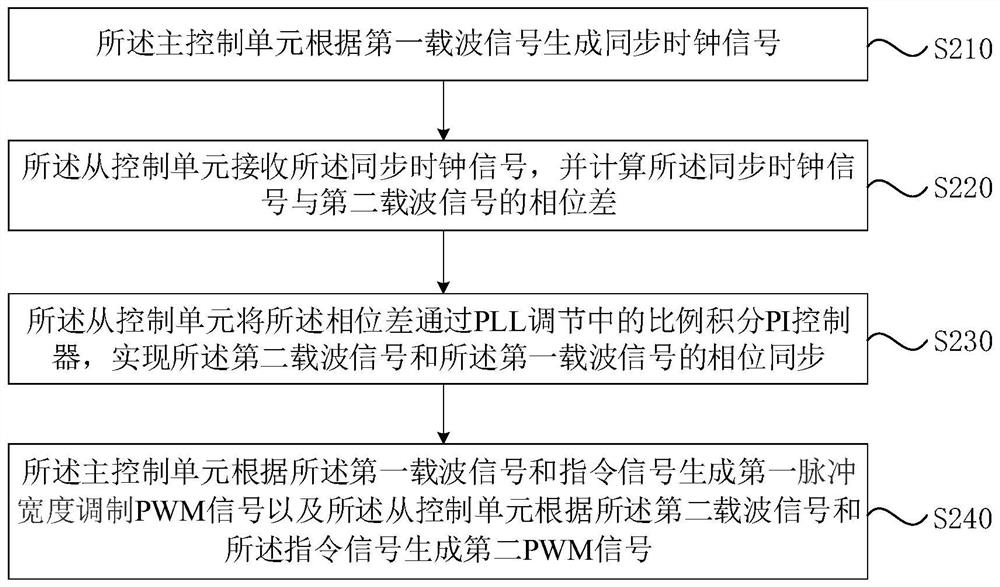Control signal synchronization method, device and system, vehicle and storage medium
A technology for controlling signals and vehicles, which is applied in the fields of control signal synchronization, vehicles and storage media, and can solve problems such as phase deviation, internal clock characteristic deviation, torque fluctuation, etc.
- Summary
- Abstract
- Description
- Claims
- Application Information
AI Technical Summary
Problems solved by technology
Method used
Image
Examples
Embodiment 1
[0032] Figure 1A It is a flow chart of a method for synchronizing control signals provided by Embodiment 1 of the present invention. This embodiment can be applied to control PWM when the motor system in a vehicle (especially an electric vehicle) is driven by more than one drive unit Signals are synchronized. The method for controlling signal synchronization provided in this embodiment can be executed by the device for controlling signal synchronization provided in this embodiment of the present invention. The device can be implemented in software and / or hardware, and integrated into a system for executing this method.
[0033] It should be noted that in the embodiment of the present invention, two drive units, the first drive unit and the second drive unit, and two control units, the master control unit and the slave control unit, are taken as examples to illustrate the method of synchronizing control signals , in the actual application process, the number of control units a...
Embodiment 2
[0056] Figure 2A It is a flowchart of a method for controlling signal synchronization provided by Embodiment 2 of the present invention. The embodiments of the present invention are optimized on the basis of the foregoing embodiments. Optionally, this embodiment explains in detail the process of controlling phase synchronization between the second carrier signal and the first carrier signal.
[0057] see Figure 2A , the method of this embodiment includes but not limited to the following steps:
[0058] S210, the main control unit generates a synchronous clock signal according to the first carrier signal.
[0059] S220. The slave control unit receives the synchronous clock signal, and calculates a phase difference between the synchronous clock signal and the second carrier signal.
[0060] S230. The slave control unit uses the phase difference through a proportional-integral PI controller in PLL adjustment to implement phase synchronization between the second carrier sign...
Embodiment 3
[0073] image 3 A schematic structural diagram of a device for controlling signal synchronization provided by Embodiment 3 of the present invention, as shown in image 3 As shown, the device may include:
[0074] The clock signal generation module 310 and the first signal generation module 340 configured in the master control unit, the phase difference determination module 320, the phase synchronization control module 330 and the second signal generation module 350 configured in the slave control unit;
[0075] The clock signal generating module 310 is configured to generate a synchronous clock signal according to a first carrier signal, wherein the first carrier signal is generated by the main control unit;
[0076] The phase difference determination module 320 is configured to receive the synchronous clock signal, and calculate the phase difference between the synchronous clock signal and a second carrier signal, wherein the second carrier signal is generated by the slave c...
PUM
 Login to View More
Login to View More Abstract
Description
Claims
Application Information
 Login to View More
Login to View More - R&D
- Intellectual Property
- Life Sciences
- Materials
- Tech Scout
- Unparalleled Data Quality
- Higher Quality Content
- 60% Fewer Hallucinations
Browse by: Latest US Patents, China's latest patents, Technical Efficacy Thesaurus, Application Domain, Technology Topic, Popular Technical Reports.
© 2025 PatSnap. All rights reserved.Legal|Privacy policy|Modern Slavery Act Transparency Statement|Sitemap|About US| Contact US: help@patsnap.com



